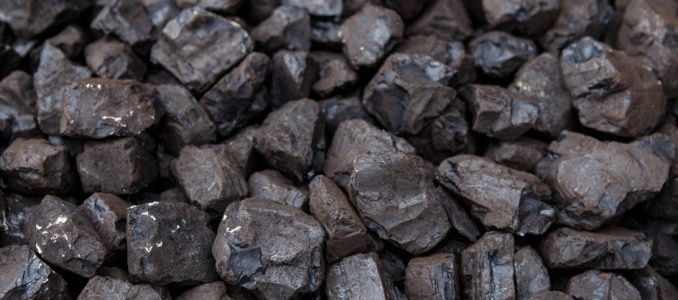
In the six months since becoming president of the United States, Donald Trump has markedly shifted the global conversation on the long-term viability of fossil fuels. The recent announcement that the U.S. would use its seat on the board of the UN’s Green Climate Fund to promote the construction of clean coal power plants across the globe, represents the administration’s stated intent to use its influence in a range of global energy and climate bodies to promote carbon capture technologies. Despite withdrawing from the Paris Climate Agreement less than two years after it was signed, the Trump administration has managed to stay on as a global energy player by changing the outlook on a resource that is crucial to the developing world: coal.
Never mind the uproar. Trump might actually be onto something – a surprising fact for an administration not known for its savvy policymaking. Among developing economies, including the rising giants of China and India, there is an existing, long-standing recognition of the need for fossil fuels, especially coal energy. While some have argued that natural gas is a better fit for developing economies, the fact remains that coal is more abundant and has a competitive edge over natural gas in many markets – especially in Southeast Asia and Sub-Saharan Africa, where coal reserves are plentiful.
For example, India’s rapidly expanding economy means the country’s appetite for gas, nuclear and coal energy grows by the year: 30 percent of all increase in the world’s energy demand from now to 2040 will come from India. In China, a similar pace of growth will see coal-fired generation activity increase by as much as 19 percent by 2020.
But massive growth in coal is not only limited to Asia, as Africa too is expected to become a major coal consumer. The International Energy Agency (IEA) estimates coal consumption in Africa to increase from 5 quadrillion Btu in 2012 to 7 quadrillion Btu in 2040 as a result of skyrocketing demand for electricity. Sub-Saharan Africa sits on vast coal reserves that are readily available and easily exploited, meaning that installing coal-powered electricity will remain a major economically viable source for the foreseeable future.
Unfortunately for developing countries, the global rhetoric is adamant that a straightforward path to fossil fuel phase-out is possible, despite the obvious economic ramifications for growing economies. Global institutions and international finance bodies have adopted a hardline stance on the issue by promoting renewables over more flexible approaches to energy consumption that could include an abundant resource such as coal. The World Bank’s decision in 2013 to heavily restrict funding for coal plants, or Deutsche Bank’s 2017 policy to pull the plug on all coal financing, are both examples of this global trend.Related: Oil Rises To 8-Week High Following Unexpected U.S. Inventory Draw
Especially in Africa, where countries rely on coal to cover their energy needs, these restrictions have been putting the breaks to their development. Unsurprisingly, African leaders such as Nigerian finance minister Kemi Adeosun have lamented that African countries are being denied coal power plants in the face of crippling energy shortages for the sake of CO2-reduction goals. With Africa’s CO2-emmissions being low in both absolute and per capita terms, Tanzania’s energy minister defiantly expressed in 2014 his country’s intention to intensify coal use in the future during a visit from then-President Obama.
However, there may be a light at the end of the tunnel. Trump’s policy to promote carbon capture and clean coal technology is now putting pressure on multilateral development banks (MDBs) like the World Bank, to rethink their stance. With the U.S. Treasury’s recent declaration that it will use its vote to push MDBs to help countries access and use fossil fuels more cleanly and efficiently, it is clear that the Trump presidency has brought one major change: developing countries now have the U.S. on their side. Trump wants those restrictions lifted, since new coal plants abroad would undoubtedly create demand and jobs in the American coal industry. But exporting energy resources abroad is also a cornerstone of Trump’s plans for US trade, with a view to creating “energy dominance” – an ambitious goal to say the least.
The policy is already bearing fruit. At the U.S.-sponsored Clean Energy Ministerial Meeting in June, U.S. Energy Secretary Rick Perry highlighted the role America plays in the transformation of the Indian energy market. In light of recent progress in India’s clean coal sector, the US and India are currently discussing plans to broaden joint research on clean coal and carbon capture.Related: Electric Vehicles No Threat To Oil Prices Anytime Soon
Most tellingly, global competitors such as China are also keen to develop better coal power plants for their domestic agendas and are reaching out to the U.S. China’s National Energy Administration has recognized the need to prioritize clean coal technology as well, and signed an agreement with the US that will allow Beijing and Washington to share results and innovations as they refine technologies to capture gases produced from burning coal.
Overcoming the barriers presented by global institutions will be a critical step in Trump’s bid to revive coal. For the U.S., this is an opportunity to establish itself as a global clean coal power, while developing nations dependent on coal for energy may finally be able to tap into their resource wealth. The bottom line is that while the scandals engulfing the White House make any cool-headed appraisal of Trump’s policies increasingly difficult, the administration’s policy shift away from renewables is nevertheless creating global effects that analysts and pundits should not ignore.



coal is needed by most of the world. Avoiding it in countries that can afford to may be noble but uncharacteristic and will probably be avoided by one and all when the price sinks in.
In short, it’s a bad story that only fake news experts will promote.